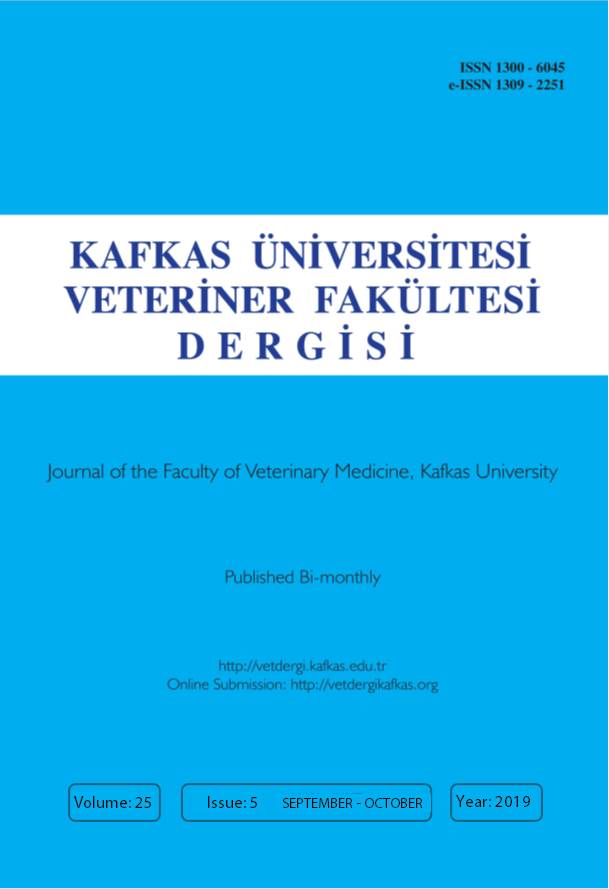
This journal is licensed under a Creative Commons Attribution-NonCommercial 4.0 International License
Kafkas Üniversitesi Veteriner Fakültesi Dergisi
2019 , Vol 25 , Issue 5
Effect of Inhibin-βA Subunit Gene on Reproductive Performance of Kazakh Sheep in Non-breeding Season
1College of Animal Science and Technology, Shihezi University, Shihezi, Xinjiang, 832003, PR CHINA
DOI :
10.9775/kvfd.2018.21414
Inhibin-βA (INHBA) could feedback suppress synthesis and secretion of follicle-stimulating hormone (FSH), which correlates with the litter size of sheep. In this study, the inhibin-βA subunit was used as a candidate gene, and Kazakh sheep was used as a test object. The polymorphism of the gene was detected by PCR-SSCP method and its association with litter size was analyzed. The results showed that there were three polymorphisms in the exon 5"UTR region (primer 0-2), for which AA, AB and BB were detected in Kazakh sheep. The correlation analysis showed that genotype AA had 0.13 (P<0.05) lambs and 0.16(P<0.05) lambs more than genotype AB and BB in Kazakh sheep. Vectors that interfering the INHBA expression including PLLU2G-shINHBA-1 (I-1), PLLU2G-shINHBA-2 (I-2), PLLU2G-shINHBA-3 (I-3) and PLLU2G-INHBA-4 (I-4) were constructed by RNA interference (RNAi) technology in the study. After the successfully separated ovarian granulosa cells were transfected with the vector, and the expression level of the gene was detected by quantitative RT-PCR. The results showed that the four vectors suppressed INHBA mRNA levels with a silencing efficiency of 34%, 58%, 39% and 19% respectively, with better interference efficiency of I-2. Then, we determined the contents of INHBA, FSH, luteinizing hormone (LH) and estradiol (E2) in serum by directing intro-ovarian injection of the I-2. The results showed that the INHBA level dropped and the FSH level raised in serum, while LH and E2 levels did not change, indicating the RNAi vector could successfully silence the INHBA expression in vivo. This study sets a good theoretical basis of researching the breeding and estrus properties of sheep, and the short hairpin (shRNA) vector is hopefully used in promoting the fecundity of sheep in practice.
Keywords :
Inhibin-βA (INHBA), Kazakh sheep, RNA interference (RNAi), Ovarian granular cells, Reproductive Performance










